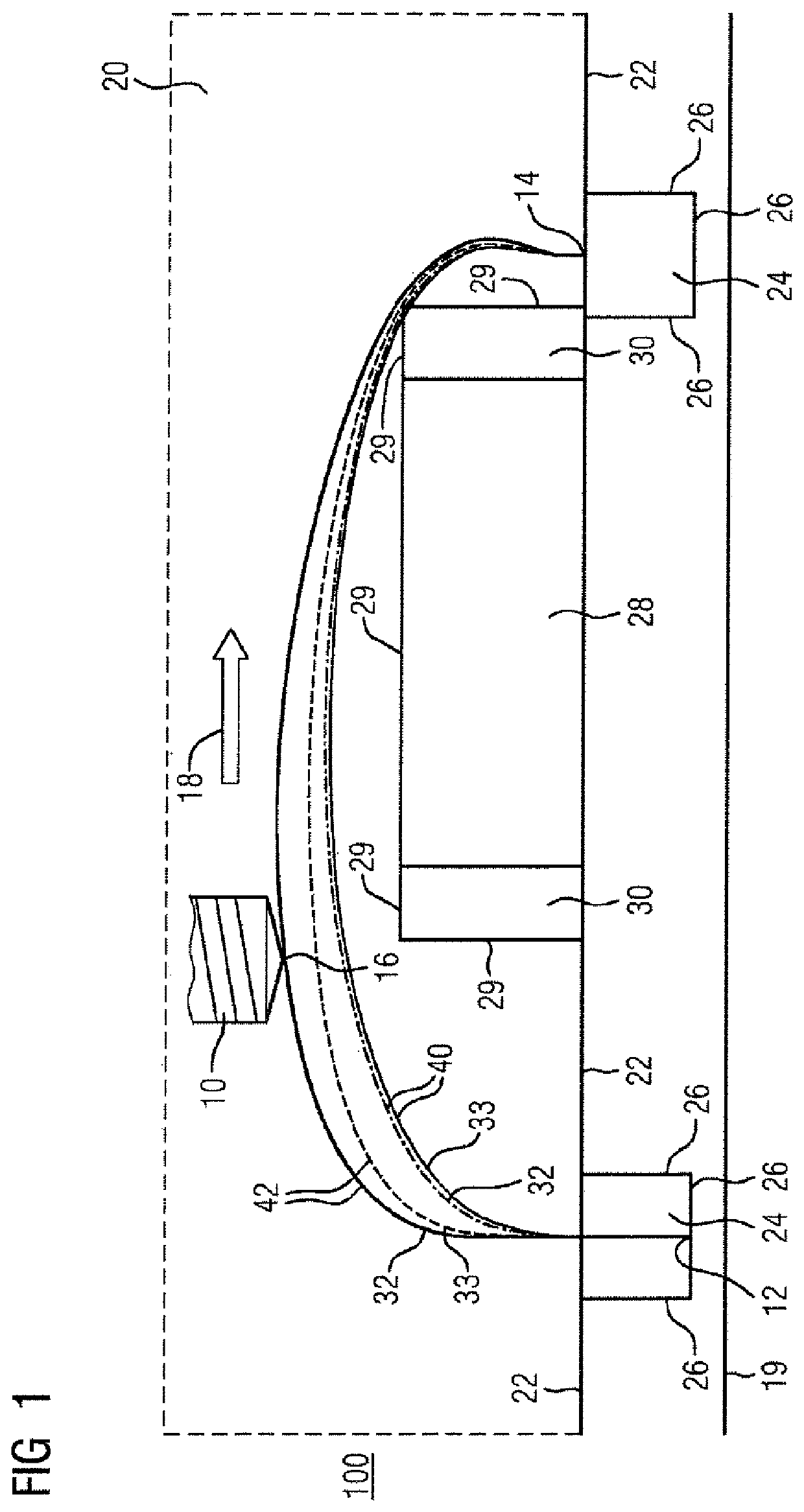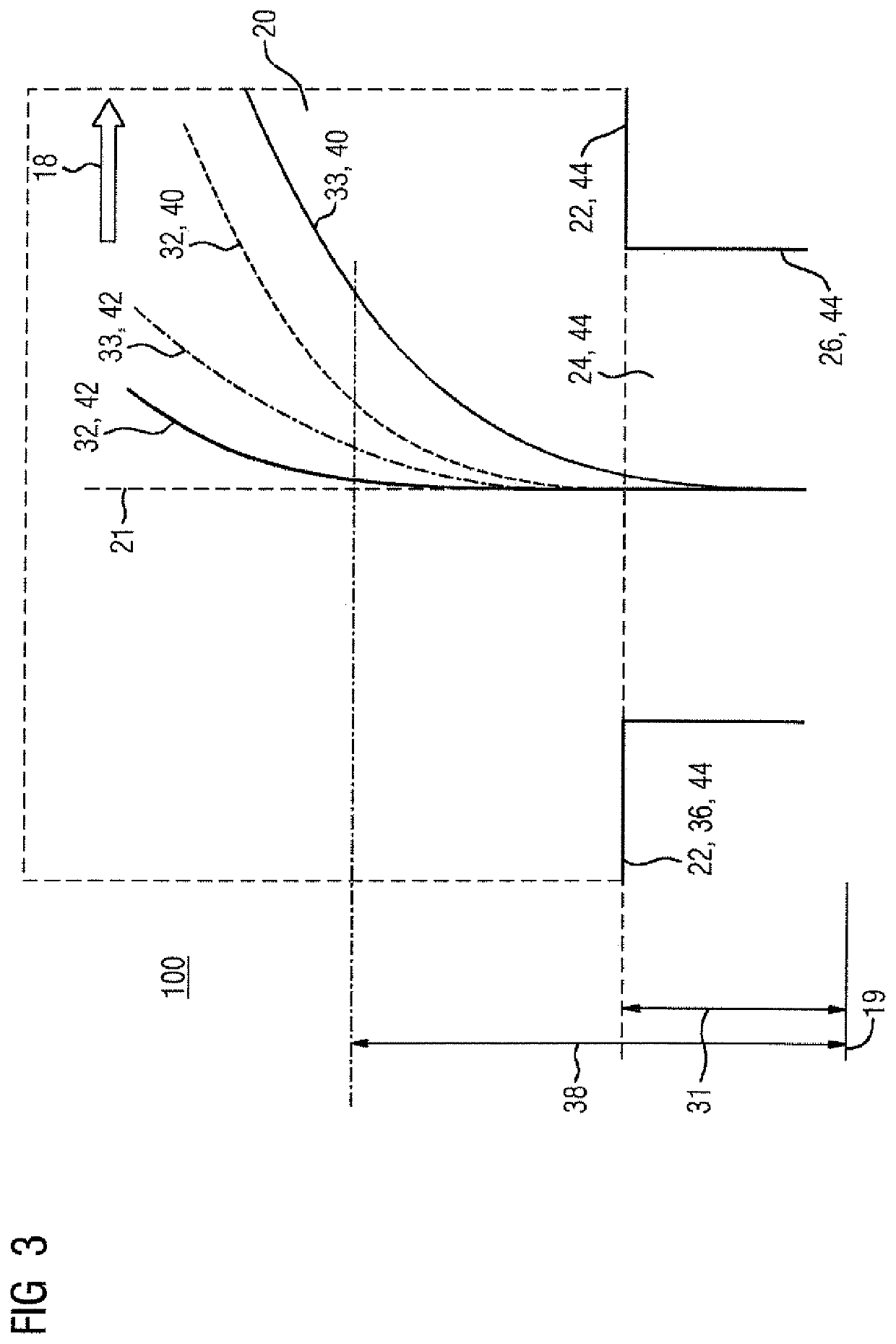Trajectory determination method for non-productive movements
a non-productive movement and trajectory determination technology, applied in the direction of programmed manipulators, programme control, instruments, etc., can solve the problems of considerable time and energy savings in performing a non-productive movement, and achieve the effect of optimizing the non-productive movement and reducing the computing power and requirements of the hardware used
- Summary
- Abstract
- Description
- Claims
- Application Information
AI Technical Summary
Benefits of technology
Problems solved by technology
Method used
Image
Examples
first embodiment
[0040]FIG. 1 shows the method 100 according to the invention in a side view. The task addressed by the method 100 is depicted in FIG. 1 as a planar projection of a spatial task. A tool 10 here moves in a travel envelope 20 which corresponds to the entire space which is accessible to the tool 10 without collision. In FIG. 1, the tool 10 is performing a non-productive movement which substantially proceeds in an overall direction of movement 18. The tool 10 is guided from the region of a recess 24 at a starting position 12 to the region of a recess 24 at a target position 14. The recesses 24 are provided in a workpiece contour 22 which extends substantially horizontally. The recesses 24 are furthermore bounded by walls 26 which adjoin one another.
[0041]The coordinates perpendicular to the illustrated overall direction of movement 18 are defined for the non-productive movement according to FIG. 1 relative to a reference plane 19. Tool reference point 16, which is substantially located a...
second embodiment
[0048]FIG. 3 depicts a detail view of the method 100 according to the invention. The tool 10, not shown in greater detail, is being moved away from a starting position 12 in the region of a recess 24 in the workpiece contour 22. The tool 10 is here being moved in the travel envelope 20 which substantially corresponds to the clear space which is accessible without collision. The movement to a target position 14, not shown in greater detail, substantially proceeds along an overall direction of movement 18. The recess 24 bounded by walls 26 corresponds to a bore which is formed in the workpiece. The workpiece contour 22 and the walls 26 are here rigid constraints 44 which each define collision conditions. In the first run 40 of the pathfinding algorithm, a first trajectory 32 is established, in which, starting from the starting position 12, movement initially merely proceeds along a reference axis 21. The first trajectory 32 is located in the region of the recess 24 on the reference ax...
PUM
 Login to View More
Login to View More Abstract
Description
Claims
Application Information
 Login to View More
Login to View More - R&D
- Intellectual Property
- Life Sciences
- Materials
- Tech Scout
- Unparalleled Data Quality
- Higher Quality Content
- 60% Fewer Hallucinations
Browse by: Latest US Patents, China's latest patents, Technical Efficacy Thesaurus, Application Domain, Technology Topic, Popular Technical Reports.
© 2025 PatSnap. All rights reserved.Legal|Privacy policy|Modern Slavery Act Transparency Statement|Sitemap|About US| Contact US: help@patsnap.com



